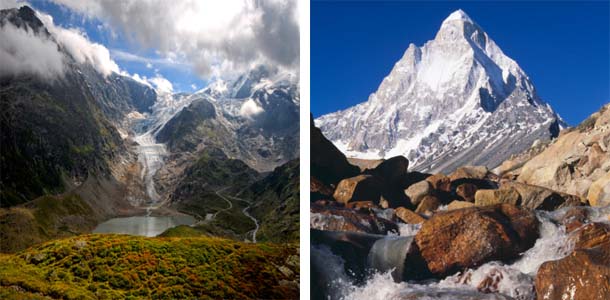Jan 07, 2026
Jan 07, 2026
News about climate change, melting of polar ice, retreating glaciers is galore in the newspapers these days. Everyday we read about the impact of global climate change. The word climate seems to have overtaken everything and everyone is curious about it. Is the rise in temperatures going to melt all the ice? Will it cause droughts? Will it affect the rainfall pattern? Such questions often haunt the mind.

Melting Glacier in Swiss Alps and in the Himalaya Region, Uttaranchal, India
15-Mar-2009
More by : V. K. Joshi (Bijji)